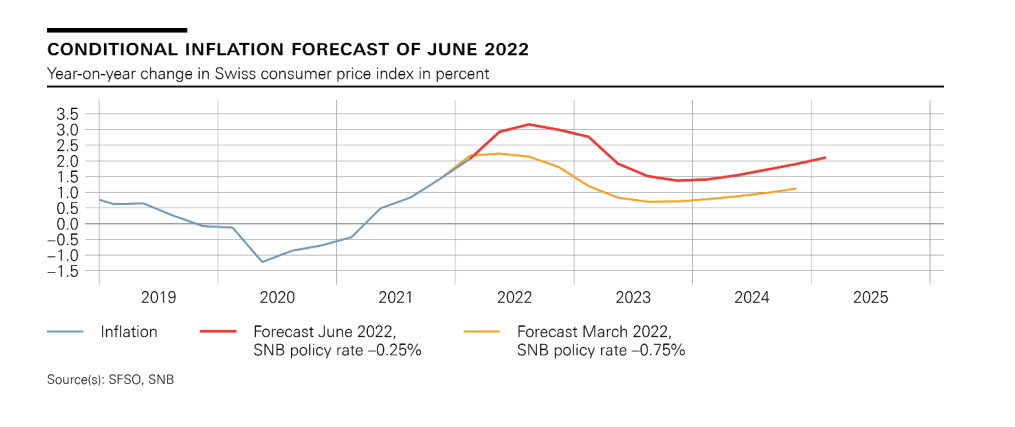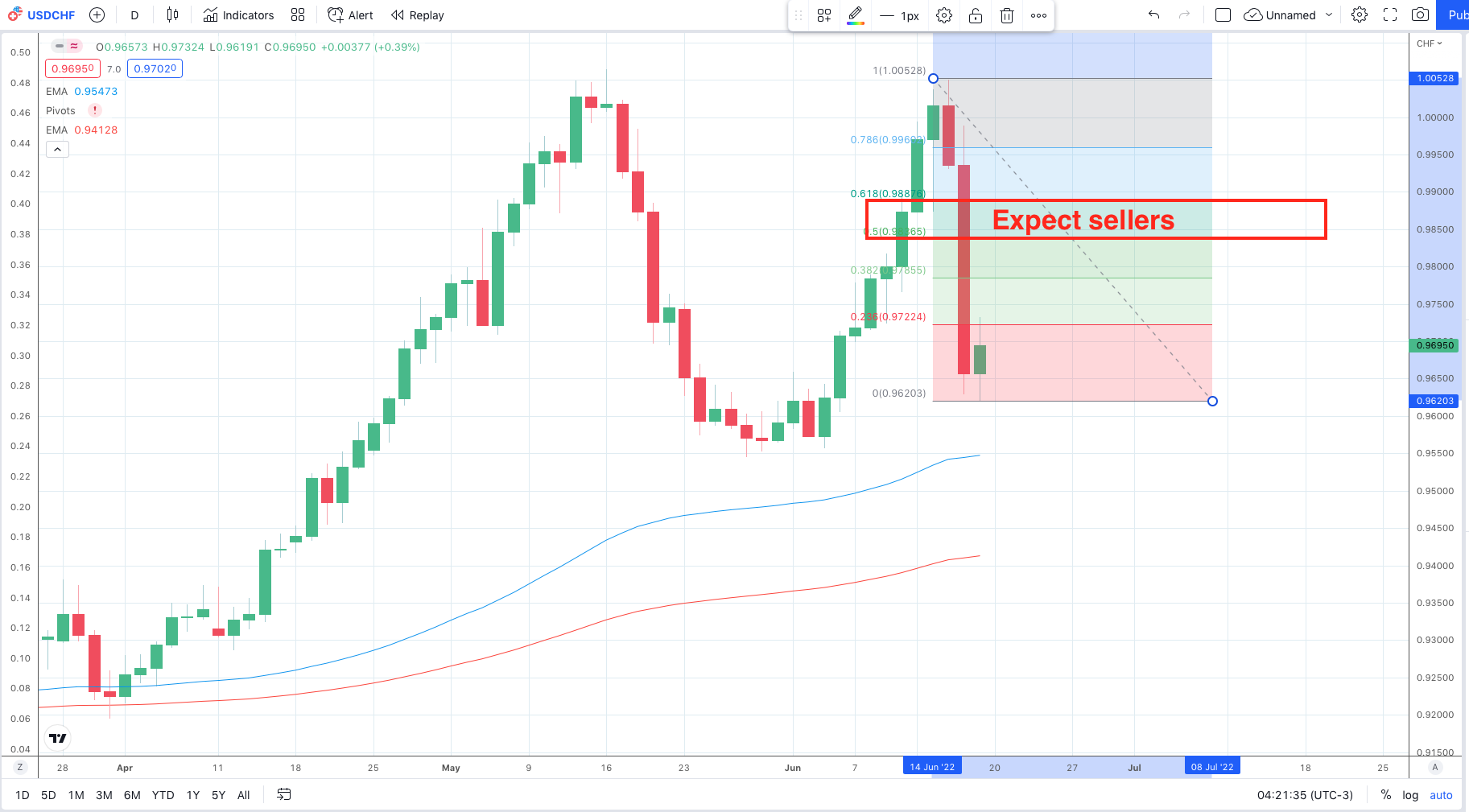This was a shock decision. For years the SNB has been battling against deflation and trying to keep the CHF from strengthening. Do you remember the attempt of the SNB to keep the EURCHF pegged at 1.2000 and its eventual capitulation in 2015? Well, the SNB is now in the position of actually wanting to strengthen the Franc in a bid to tackle inflation. This is how the decision last Thursday went and what it means more widely.
50 bps hike
No economists going into the SNB meeting expected the SNB to move on rates. This was because no one thought the SNB would hike rates before the ECB did. However, the central bank announced on June 16 that, ‘the SNB is tightening its monetary policy and is raising the SNB policy rate and the interest rate on sight deposits at the SNB by half a percentage point to – 0.25% to counter increased inflationary pressure’. This hike is all about one thing, fighting inflation.
Inflation buster: fearing spreading inflation
The SNB attributed the inflation to the conflict in Ukraine driving up prices for commodities which compounded already persisting supply bottlenecks. So, why did it hike rates as both of these factors are out of the SNB’s control? The answer is to combat spreading inflation. The second line of the SNB’s statement stated, ‘the tighter monetary policy is aimed at preventing inflation from spreading more broadly to goods and services in Switzerland’. Linked to this is the idea that the Swiss, like the RBA and the BoE, and the Fed, do not want to see a ‘wage-price’ spiral.
The SNB revised its inflation forecast higher, but still sees it dropping around the middle of next year.
The takeaway
The move by the SNB before the ECB is a significant shift. We no longer have the reference to the CHF being ‘highly valued’ and the need for FX intervention to address it. According to the excellent team over at ING, with a piece authored by Charlotte de Montpellier, Chris Turner, and Antoine Bouvet: ‘We take this to mean that the SNB will now sell EUR/CHF to ensure that the trade-weighted CHF appreciates by roughly 4% per annum. Why do we say 4%? This is because the SNB told us in late April it wants to keep the real CHF stable and a 4% nominal appreciation in the trade-weighted CHF is required to offset the low inflation in Switzerland relative to trading partners.’
Inflation tackler
All of this means the SNB is tackling inflation on the front foot and they don’t want inflation to go into wages. With inflation at 2.9% in May the SNB is trying to slow that down as quickly as possible. This does open up a USDCHF sell bias for now. If the US starts to show falling inflation then USDCHF could move sharply lower. So, one to watch with key levels marked.
Our products and commentary provides general advice that do not take into account your personal objectives, financial situation or needs. The content of this website must not be construed as personal advice.
Recommended Content
Editors’ Picks
AUD/USD bounces to 0.6450, shrugs off mixed Australian jobs data

AUD/USD is rebounding to test 0.6450 amid renewed US Dollar weakness in the Asian session on Thursday. The pair reverses mixed Australian employment data-led minor losses, as risk sentiment recovers.
USD/JPY bounces back toward 154.50 amid risk-recovery

USD/JPY bounces back toward 154.50 in Asian trading on Thursday, having tested 154.00 on the latest US Dollar pullback and Japan's FX intervention risks. A recovery in risk appetite is aiding the rebound in the pair.
Gold rebounds on market caution, aims to reach $2,400

Gold price recovers its recent losses, trading around $2,370 per troy ounce during the Asian session on Thursday. The safe-haven yellow metal gains ground as traders exercise caution amidst heightened geopolitical tensions in the Middle East.
Manta Network price braces for volatility as $44 million worth of MANTA is due to flood markets

Manta Network price was not spared from the broader market crash instigated by a weakness in the Bitcoin market. While analysts call a bottoming out in the BTC price, the Web3 modular ecosystem token could suffer further impact.
Investors hunkering down

Amidst a relentless cautionary deluge of commentary from global financial leaders gathered at the International Monetary Fund and World Bank Spring meetings in Washington, investors appear to be taking a hiatus after witnessing significant market movements in recent weeks.

